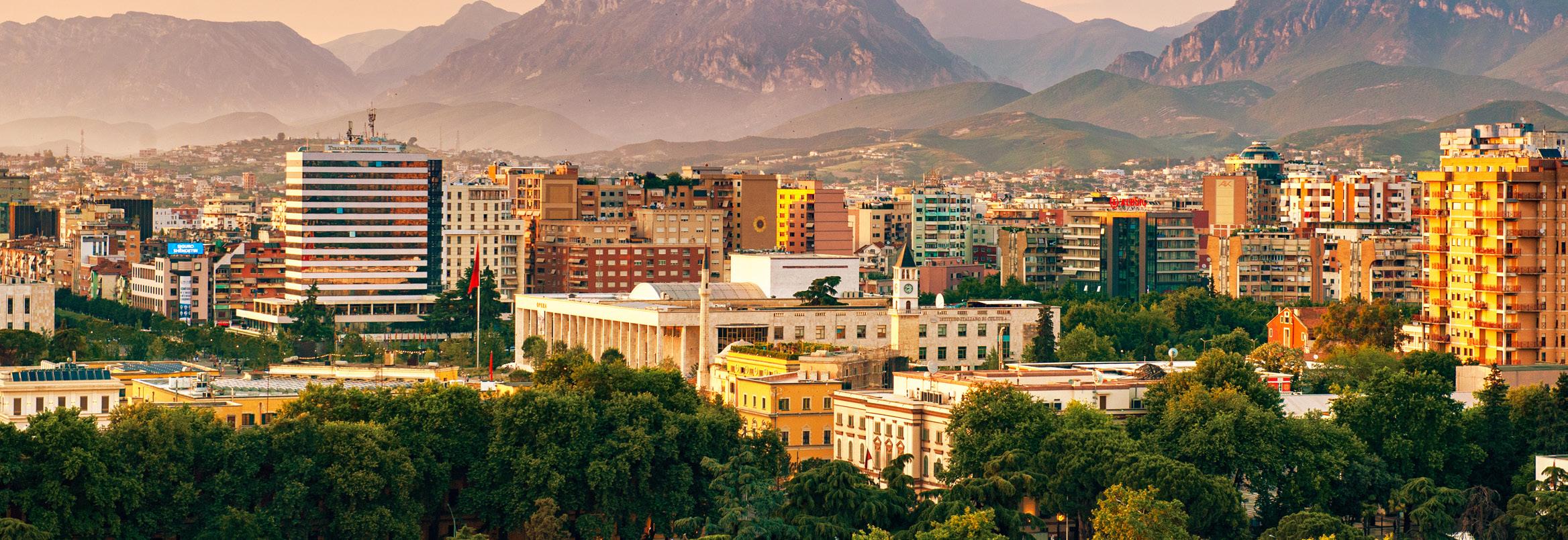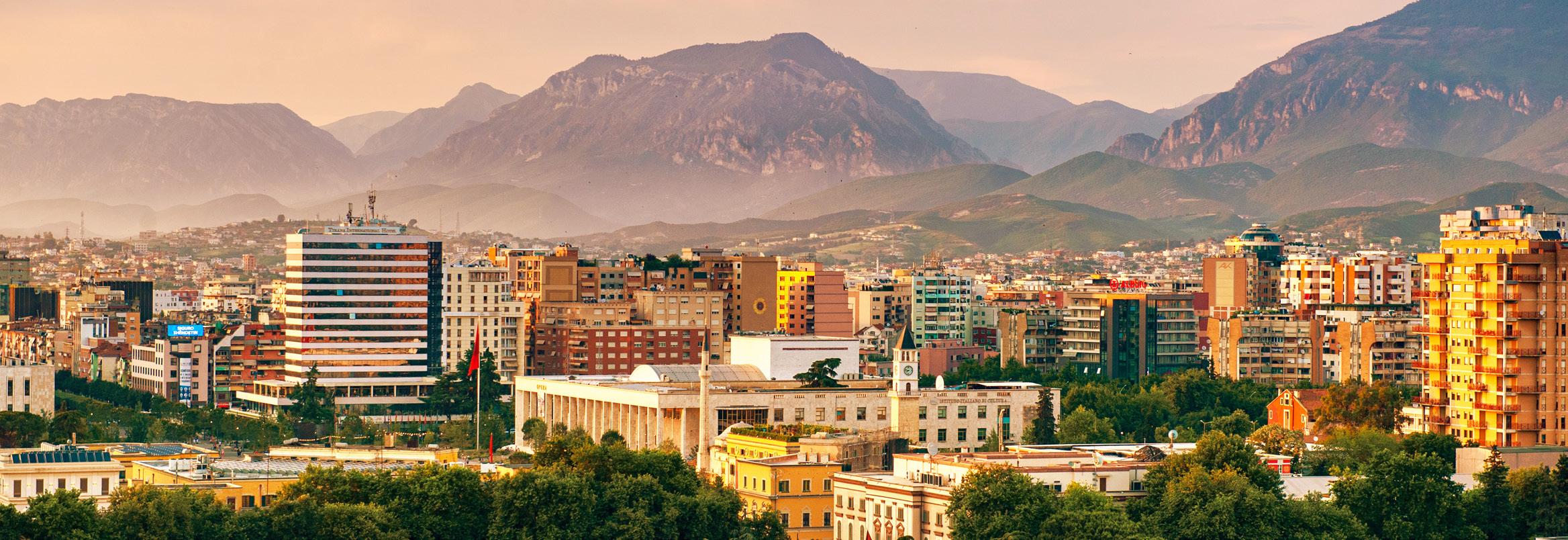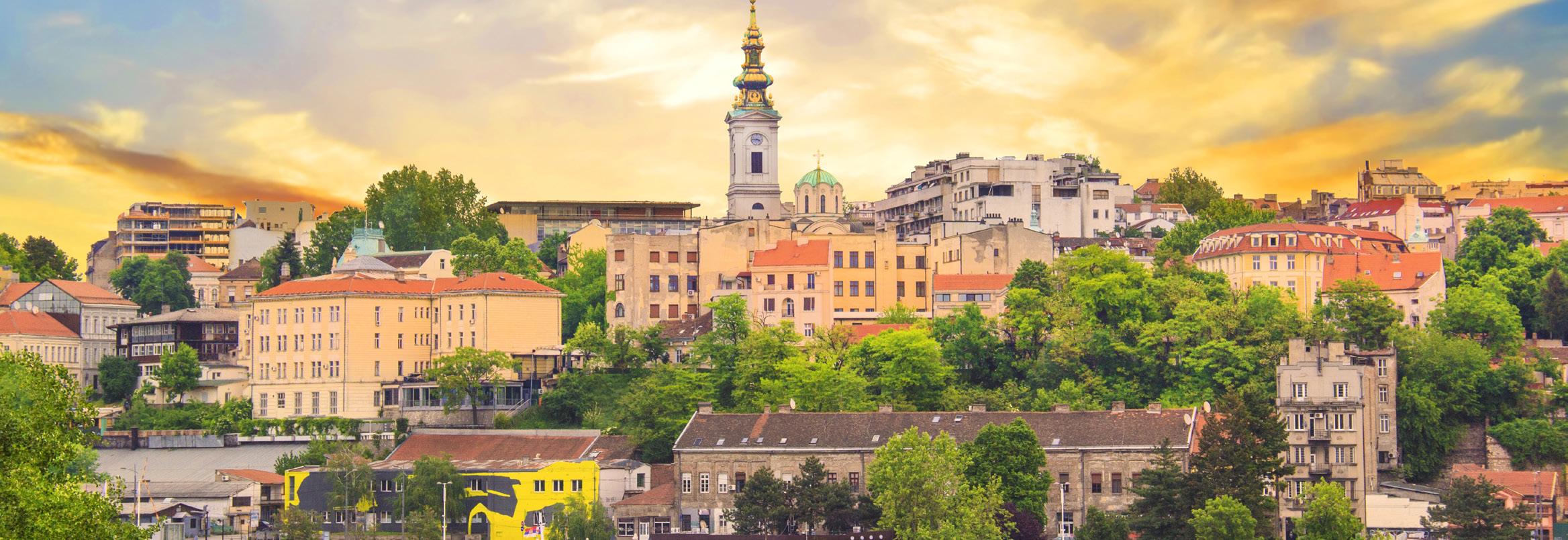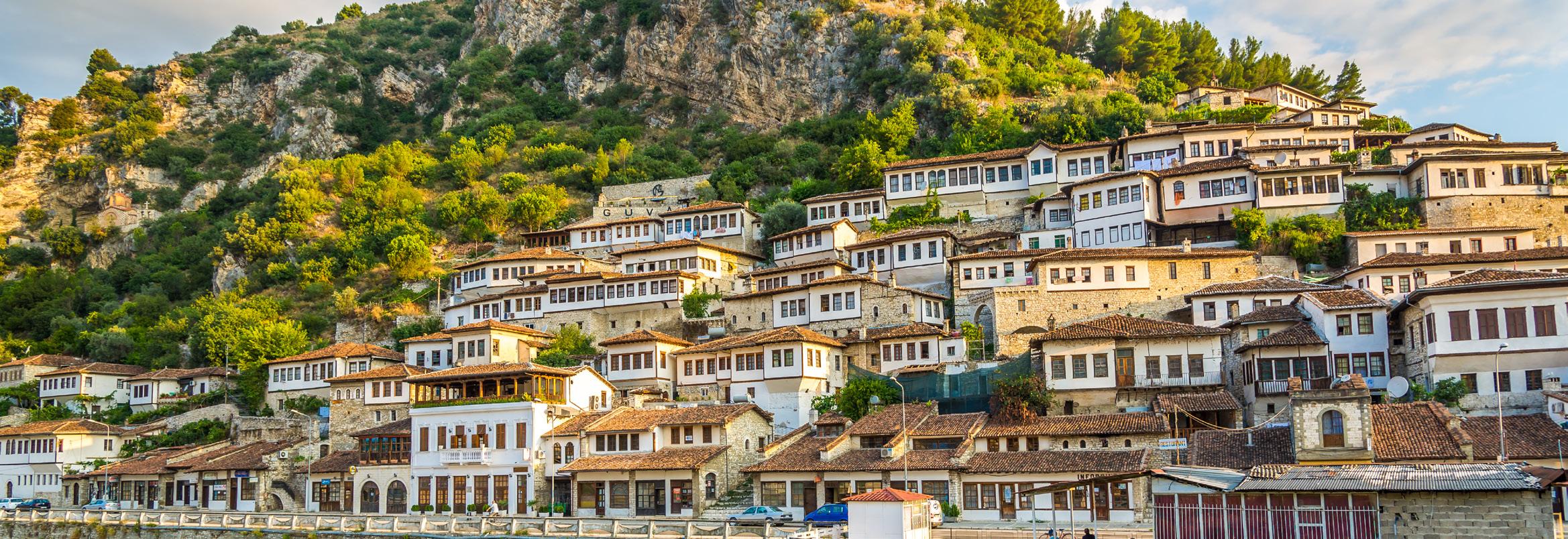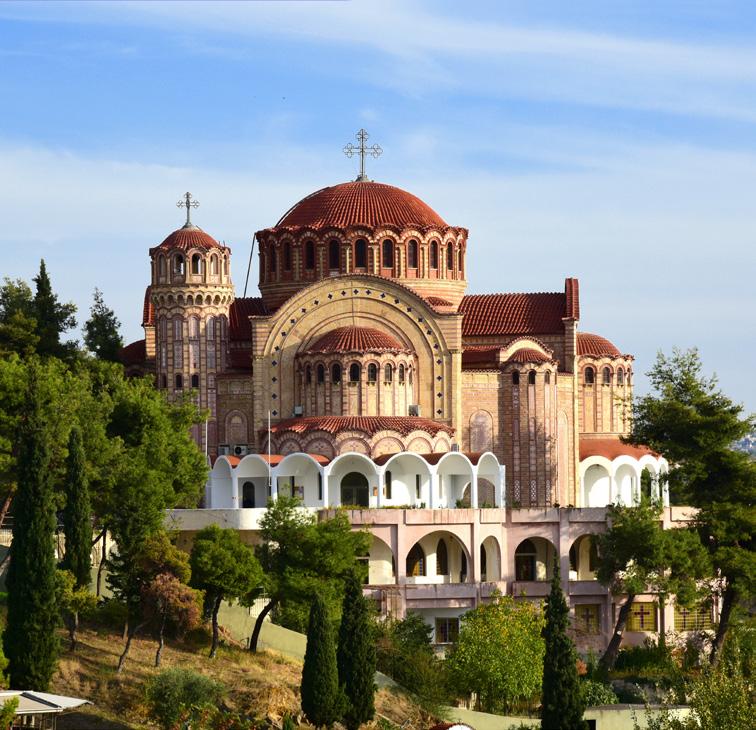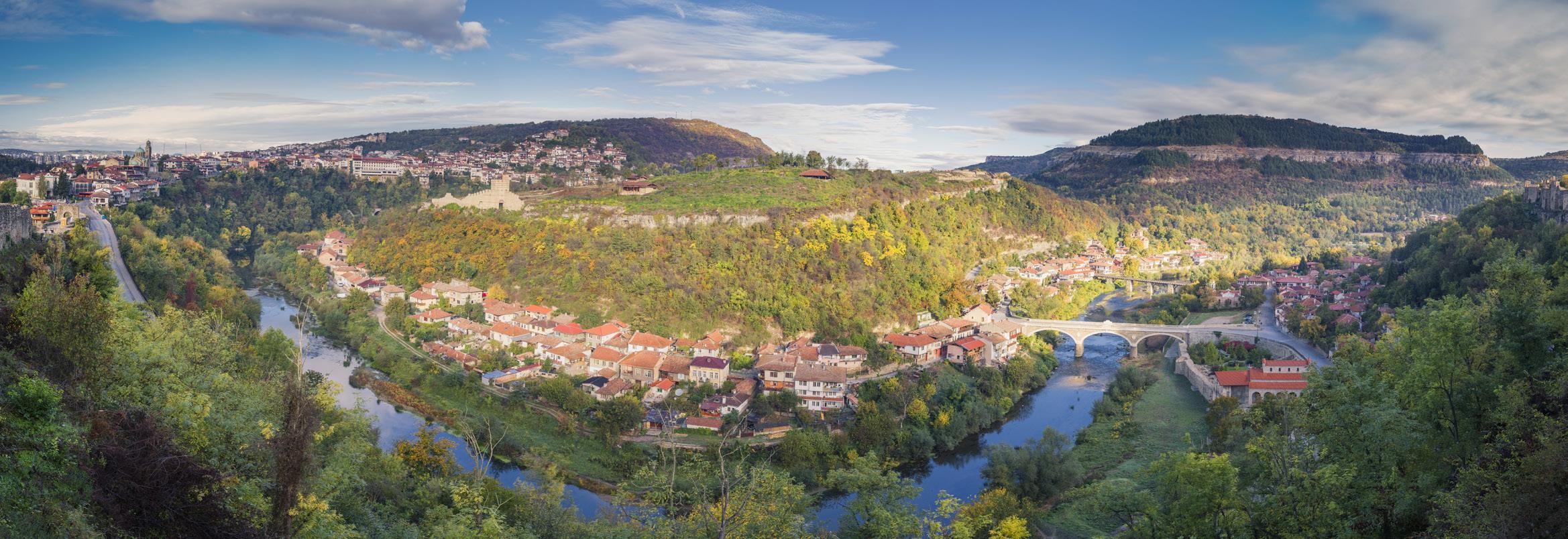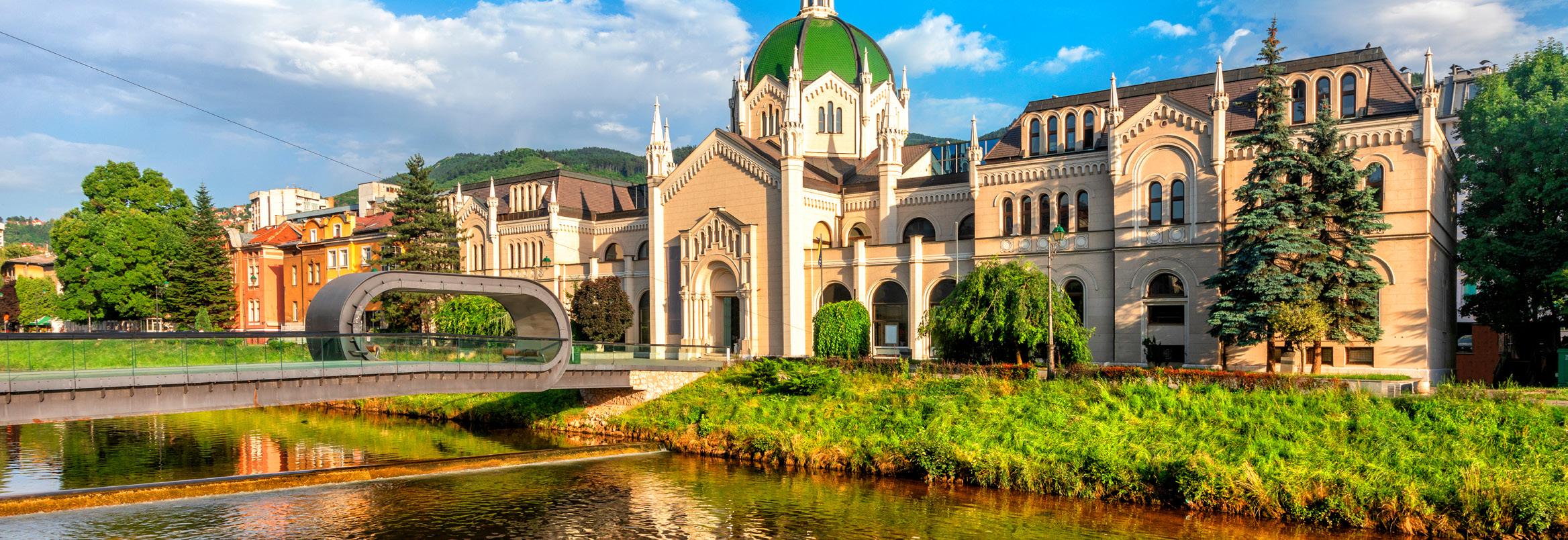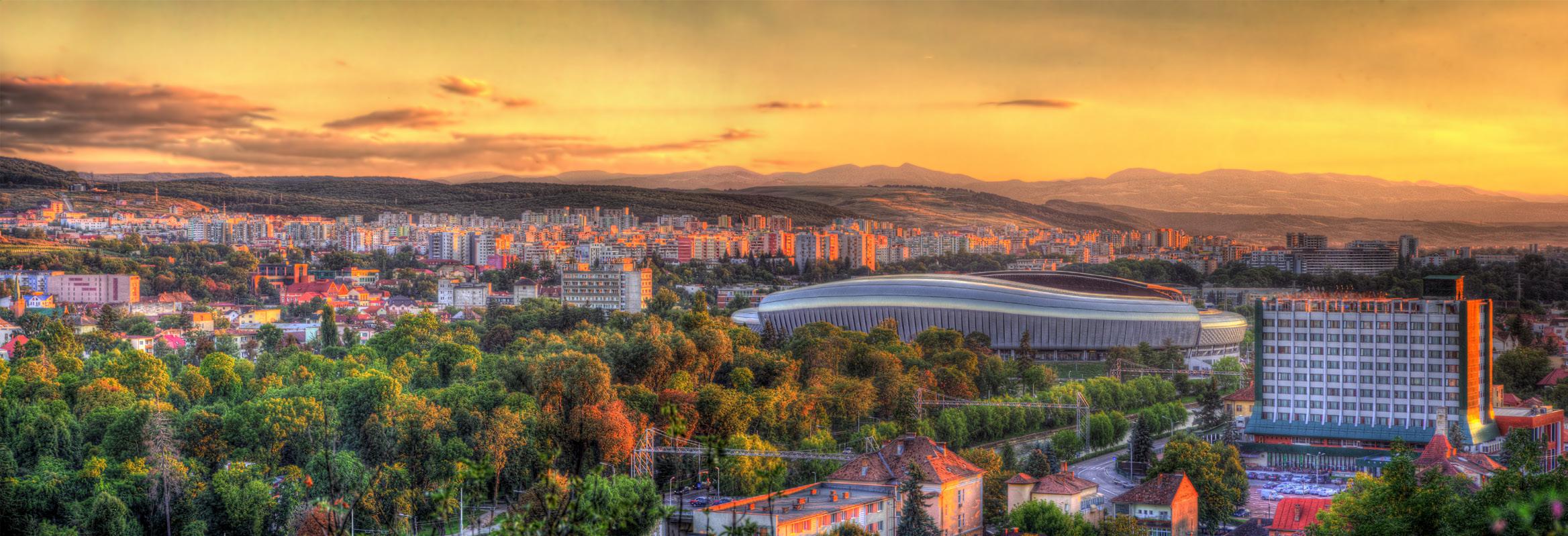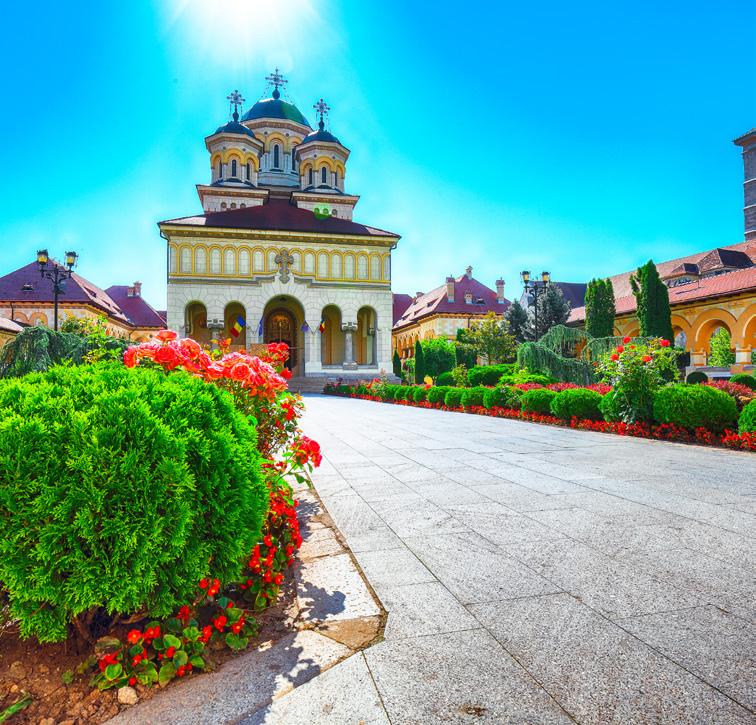
7 minute read
Romania & Bulgaria, Castles & Monasterie
Romania & Bulgaria ,Castles & Monasteries
Day 1. Homeland - Bucharest Arrive in Bucharest, the capital of Romania.
Advertisement
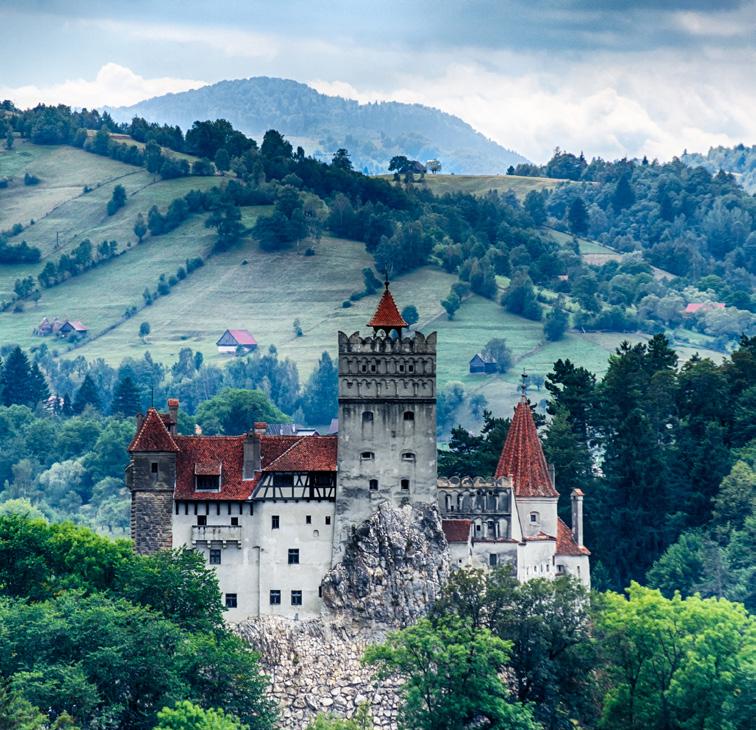
Day 2. Bucharest - Sinaia: Bran - Sighisoara Upon arrival we will visit the nearby Peles and Pelisor Castles. Almost adjacent to Peles Castle is Pelisor (“Little Peles”). We depart for Bran and Bran Castle. Bran Castle is erroneously claimed by some to be that of Count Dracula. After our visit we continue to Sighisoara, arriving in time for dinner.
Day 3. Sighisoara - Biertan - Sibiu - Sighisoara This morning we will start with a walking tour of Sighisoara. We will visit to the History Museum located in the former Town Hall, the Clock Tower. We will also see the house where Vlad Tepes once lived. We continue on to Biertan. We drive to Sibiu.
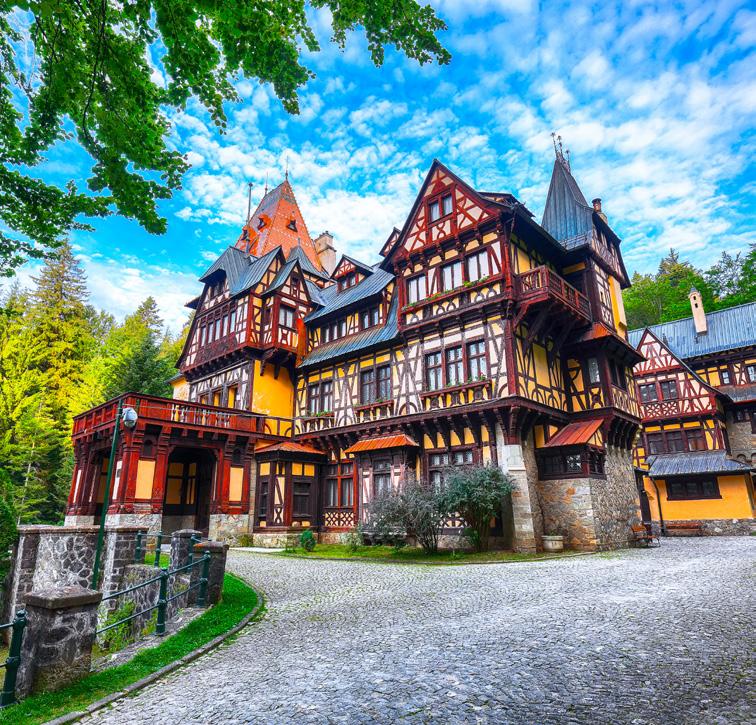
Day 4. Sighisoara - Praid - Bistrita - Gura Humorului We arrive in the heart of the mountains by bus through a long tunnel. 120 m below the surface we find an underground city. After a break for lunch in Praid, we continue via Bistrita, founded in the early 13th century by German settlers and to become one of Transylvania’s major Medieval cities. We overnight in Gura Humorului, the perfect base for our explorations of the painted Monasteries of Bucovina.
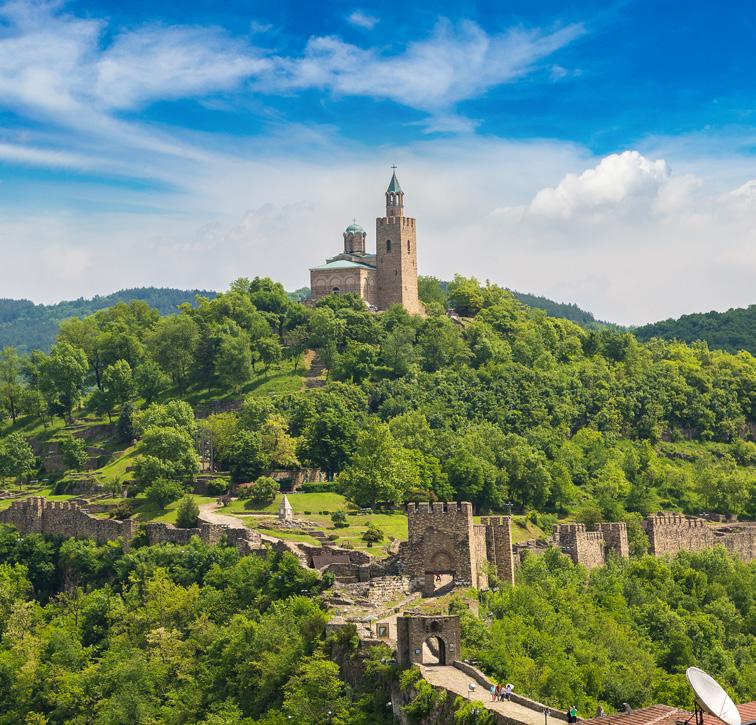
Day 5. Bucovina Monasteries Today is spent visiting some of the most impressive Bucovina monasteries. Voronet is probably the most accomplished sample of artistic achievement in Moldavian architecture and painting. After a visit to the famous Marginea black ceramics centre, we visit the Sucevita Monastery, the largest and arguably the finest of the Bukovina monasteries.
Day 6. Gura Humorului - Cheile Bicazului - Lacul Rosu - Brasov The road that slices through the Bicaz Gorges is among Romania’s most spectacular. The gorge twists and turns steeply uphill for 5km, cutting through sheer, 300-meter high limestone rocks. At one point, the narrow mountain road runs beneath the overhanging
rocks in a section known as the ‘neck of hell’. This stretch of road is protected as part of the Hasmas-Bicaz Gorges National Park. A few kilometers west we will cross into Transylvania’s Harghita County and immediately come to the resort area of Lacu Rosu or Red Lake. The alpine resort in this region sprang up in the 1970’s and is still a magnet for hikers from both Transylvania and Moldavia. We’ll break for lunch before continuing to Brasov.
Day 7. Brasov - Bucharest This morning we tour Brasov. In Brasov we will visit the Black Church and Museum of First Romanian School of Schei. We depart for Bucharest. We then begin our sightseeing program in the capital. Our tour today will include the Cotroceni Palace and Museum, Parliament Palace. We will also see the Triumphal Arch, the Romanian Athenaeum, and University Square. We will drive out to visit the Bucharest Village Museum. In the evening join us for a festive dinner and a traditional dance and music show.
Day 8. Bucharest - Sofia - Bulgaria This morning we explore the beautiful Peles Castle, an impressive structure which is sure to take your breath away! We then head to Bucharest where you will have free time to explore the area and discover the contrasts of Romania’s cultural capital. Bucharest also boasts the world’s second largest building, the Palace of Parliament.If you’d like to learn more about the traditional way of life of Romanian peasant farmers you can visit the Village Museum
Day 9. Sofia - Rila - Sofia This morning we depart for the 10th century Rila Monastery, 121 km (75 miles) south of Sofia at the end of a winding road through high rock walls with formations like giant animals waiting to pounce. The Rila Monastery is one of Europe’s largest monasteries, located in some of Bulgaria’s most beautiful terrain. Sightseeing of the monastery features the unsurpassed frescoes of the Church of the Blessed Virgin. After lunch we will return to Sofia.
Day 10. Sofia - Plovdiv Today we travel to the ancient city of Plovdiv, situated in the Plain of Thrace. Plovdiv was formerly known as Pulpudeva until Philip II of Macedon’s weary horse collapsed under him here at the edge of the Thracian plain in AD 342. Our tour includes the Old Quarter, the Ethnographical Museum, and the Roman Amphitheatre. Within Trimontium, the historic heart of Plovdiv, typical 19th century Bulgarian homes line the streets.
Day 11. Plovdiv - Valley of the Roses - Veliko Tarnovo In this valley, 70 percent of the world’s “attar”, or extract from roses, is produced. Nimblefingered women and girls do most of the picking, while donkeys are used to carry the petals away. In the town of Kazanlak we visit the Thracian Tomb (fourth and third centuries BC). The Thracians are regarded as the original Bulgarians, a people closely linked with the ancient Greeks. Before our climb over the Shipka Pass we will visit the Shipka Memorial Church. The golden Domes of this Russianstyle church rise out of the hillside. After crossing the spectacular Shipka with its majestic vistas and momentous history we visit the open-air Ethnographical Museum of Etura, a recreation of a typical 19th century village. After a tour of the museum we continue on to Veliko Tarnovo, once the capital of Bulgaria (1185-1396) and still showing the remains of its past glory -- fortress walls and palaces perched among the steep cliffs of the Yantra Gorge.
Day 12. Veliko Tarnovo Today we have a tour of this town laced with history. We will admire the breathtaking views of this picturesque region during our tour of the Tsarevets Citadel (Castle of the Czar). This commanding position was first fortified in the 6th century and had become the royal centre of the Second Bulgarian Kingdom by the end of the 12th century. A short drive away is the hilltop village of Arbanassi, first settled by Albanian immigrants in the 15th century. We will have the opportunity to visit several of the houses in the region dating back to the 16th and 17th centuries.
Day 13. Veliko Turnovo - Sofia Today we travel to Sofia via the beautiful Danube Plain. En-route we will cross over the Troyan Pass and visit the nearby Troyan Monastery, Bulgaria’s third largest. After a lunch break we will continue on the wellpreserved ‘museum-town’ of Koprivshtitsa. It was here that the revolt against the Ottoman occupation began in 1876. A visit here gives us an insight as to how Bulgarians lived a century ago. Our walk throughout the enchanting town will bring us to many unique houses with wooden columns, painted facades, richly decorated interiors, and lovely gardens.
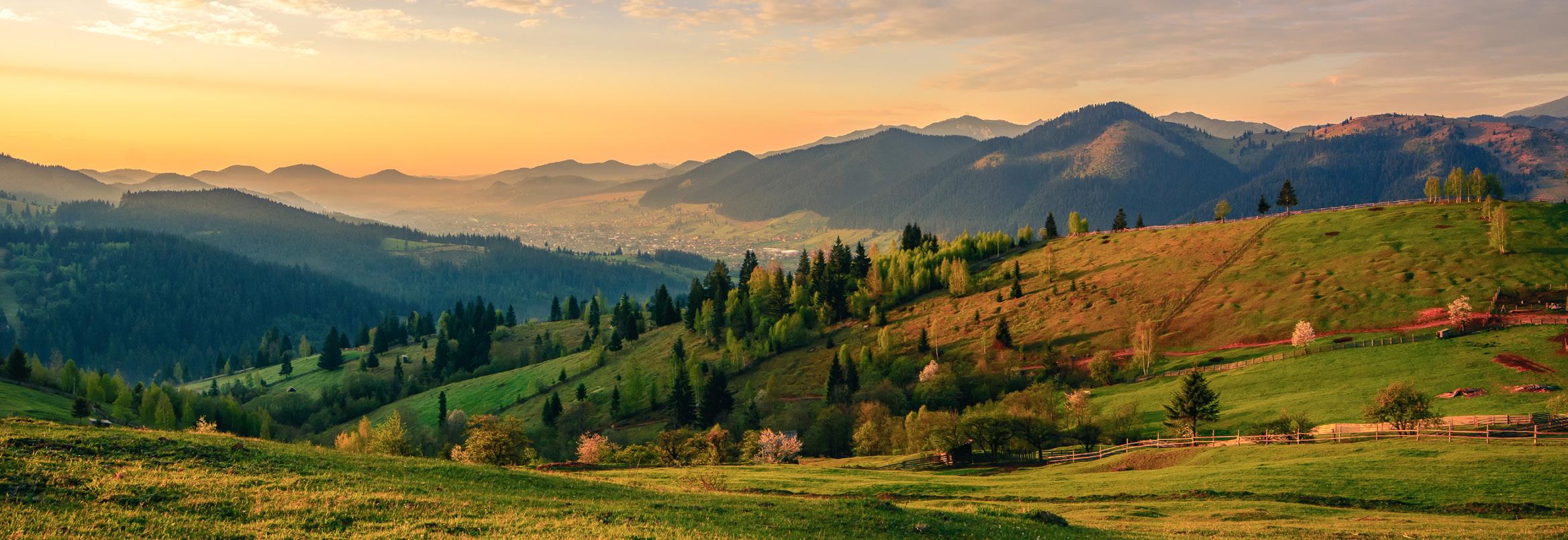
Day 14. Sofia: City Sightseeing Sofia today is an exciting meeting place of history and the present. Traces of the lives of Thracians and Romans, Proto-Bulgarians and Slavs can be seen here. We’ll also see some of the most famous landmarks: The magnificent St Alexander Nevsky Cathedral, one of the most spectacular buildings in Sofia. In addition to the splendor of the building itself. St Sofia’s Church is the second oldest, but most significant building, which gave the city its name. Specialists highly value this remarkable archaeological monument, witness of Serdica’s golden age during the 6th century. The large archaeological complex of Roman and medieval ruins, dominated by St George Rotunda is the oldest building in Sofia. Repeatedly destroyed and rebuilt, the St George Rotunda has been restored to its original 5th century appearance when it was used as a Christian church. We’ll enjoy our last night in Bulgaria at a traditional restaurant.
Day 15. Sofia - Homeland Departure from Sofia.
Services
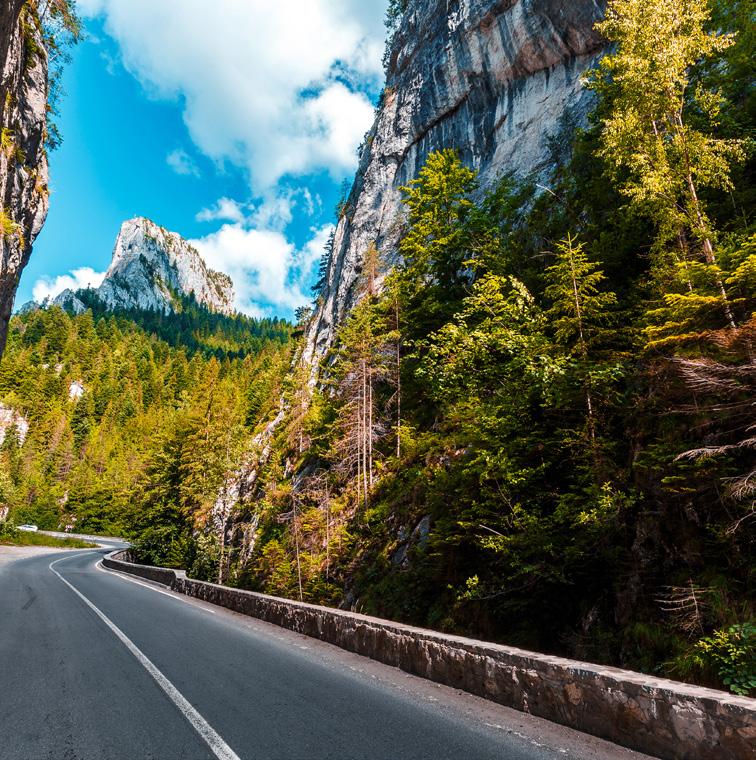
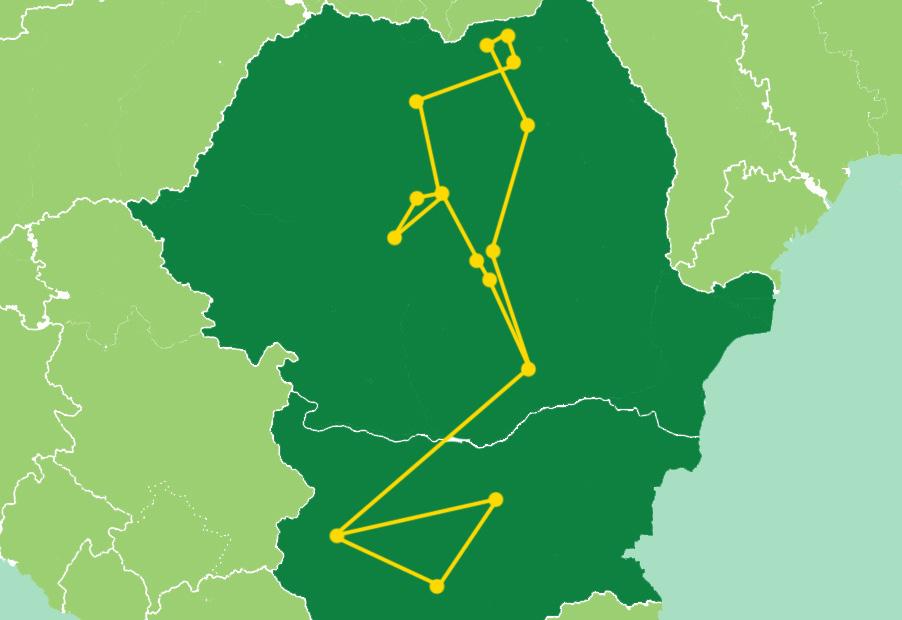
14 nights of accommodation in 4* Hotels with HB English speaking guide Bus/Mini-bus at your disposal 2 festive dinner Traditional dance and music show 1 SGL room free of charge for the foreign tour leader
Minimum of turists 10+1 15+1 20+1 25+1 30+1 35+1 40+1 45+1 Price per person (place in DBL/HB) 1160€ 980€ 885€ 835€ 800€ 770€ 755€ 735€ SGL Supplement 200€ 200€ 200€ 200€ 200€ 200€ 200€ 200€
14 Lunches Supplement 170€ 170€ 170€ 170€ 170€ 170€ 170€ 170€

